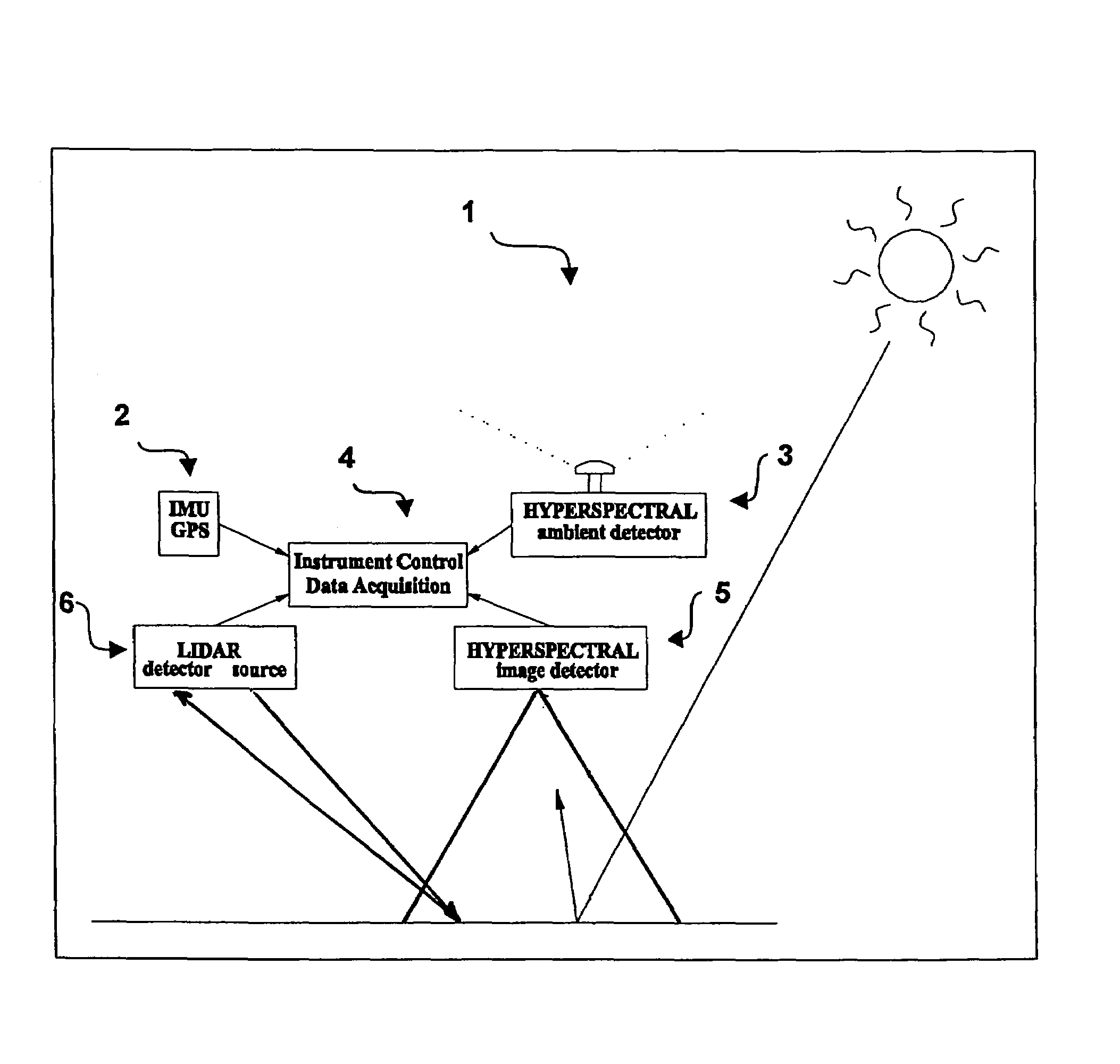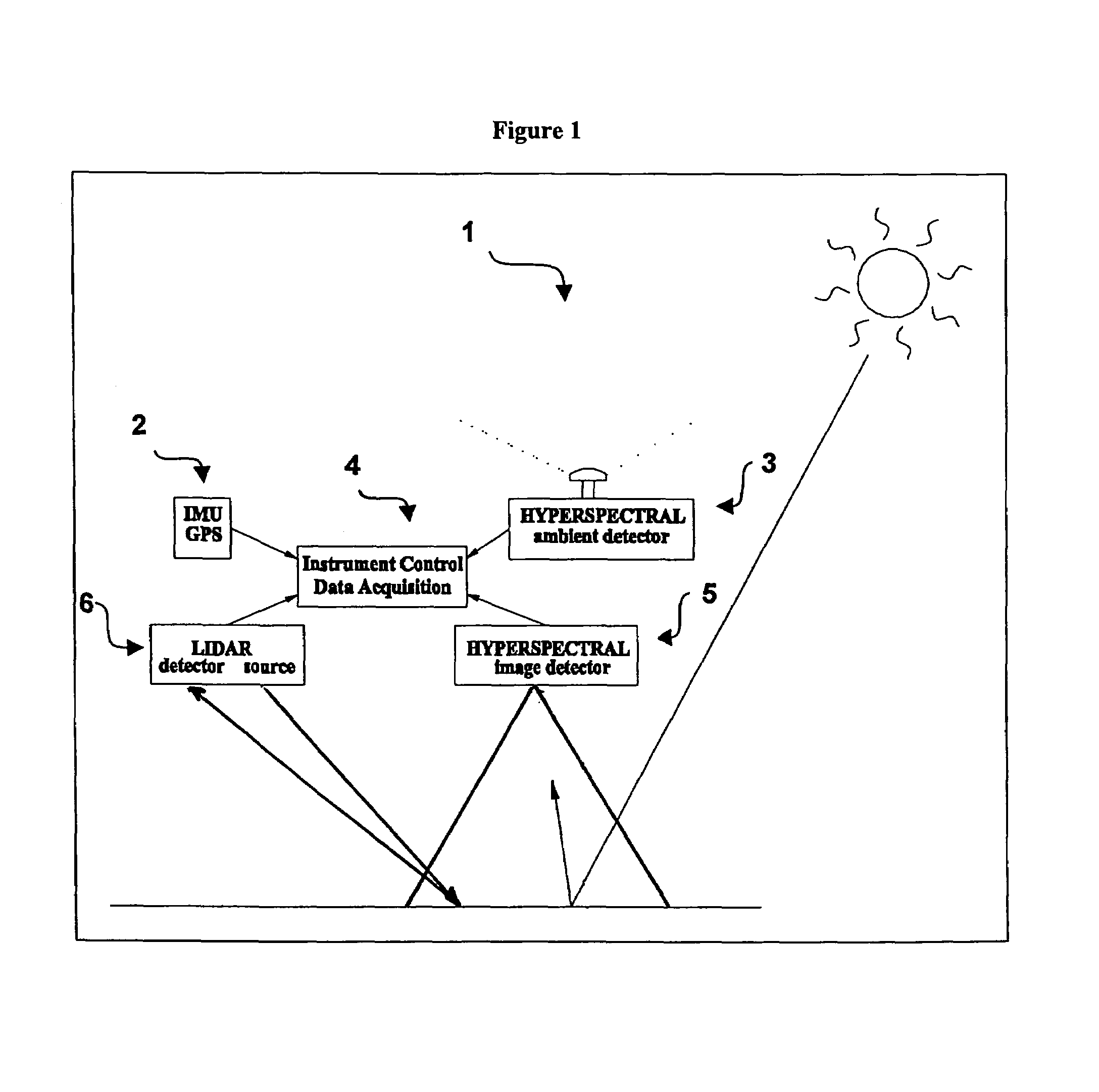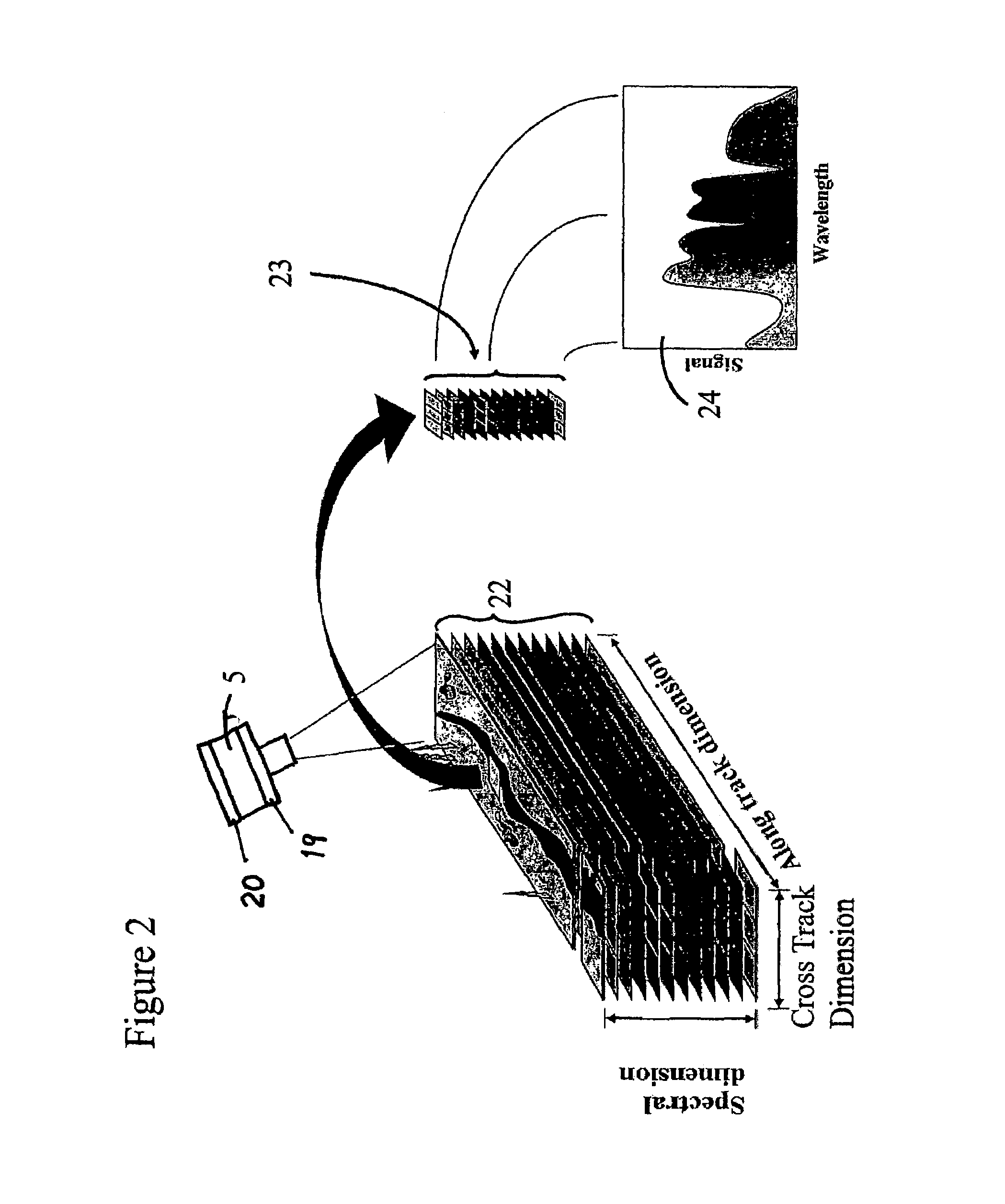Spectral imaging system
a spectral imaging and imaging system technology, applied in the field of spectral imaging systems, can solve the problems of not disclosing the use of light or imaging, the use of any second-order filter, and the inability to use the dynamic range of oceanographically obscured environmental media, etc., and achieve the challenge of the environment for the development of remote sensing instruments and algorithms
- Summary
- Abstract
- Description
- Claims
- Application Information
AI Technical Summary
Benefits of technology
Problems solved by technology
Method used
Image
Examples
Embodiment Construction
[0038]This detailed description and the drawings provides specific examples of the invention, but the invention should not be limited merely to the examples disclosed. Instead, the invention should be limited only by the claims that may eventually issue. Many variations in the system, changes in specific components of the system and uses of the system will be readily apparent to those familiar with the area of remote sensing based on the drawings and description provided.
[0039]In one embodiment, a system of remotely sensing coastal marine environments is developed that has the capability of coupling a multispectral imaging sensor and a LIDAR system to improve the resulting information obtained on elements of interest within the coastal marine environment, such as shown in FIG. 1.
[0040]One embodiment includes a device and method for calibrating a spectral imaging camera. The system may also include a method for processing remotely sensed, multi-spectral data, such as the capability o...
PUM
| Property | Measurement | Unit |
|---|---|---|
| quantum efficiency | aaaaa | aaaaa |
| frequencies | aaaaa | aaaaa |
| scanning frequency | aaaaa | aaaaa |
Abstract
Description
Claims
Application Information
 Login to View More
Login to View More - R&D
- Intellectual Property
- Life Sciences
- Materials
- Tech Scout
- Unparalleled Data Quality
- Higher Quality Content
- 60% Fewer Hallucinations
Browse by: Latest US Patents, China's latest patents, Technical Efficacy Thesaurus, Application Domain, Technology Topic, Popular Technical Reports.
© 2025 PatSnap. All rights reserved.Legal|Privacy policy|Modern Slavery Act Transparency Statement|Sitemap|About US| Contact US: help@patsnap.com



